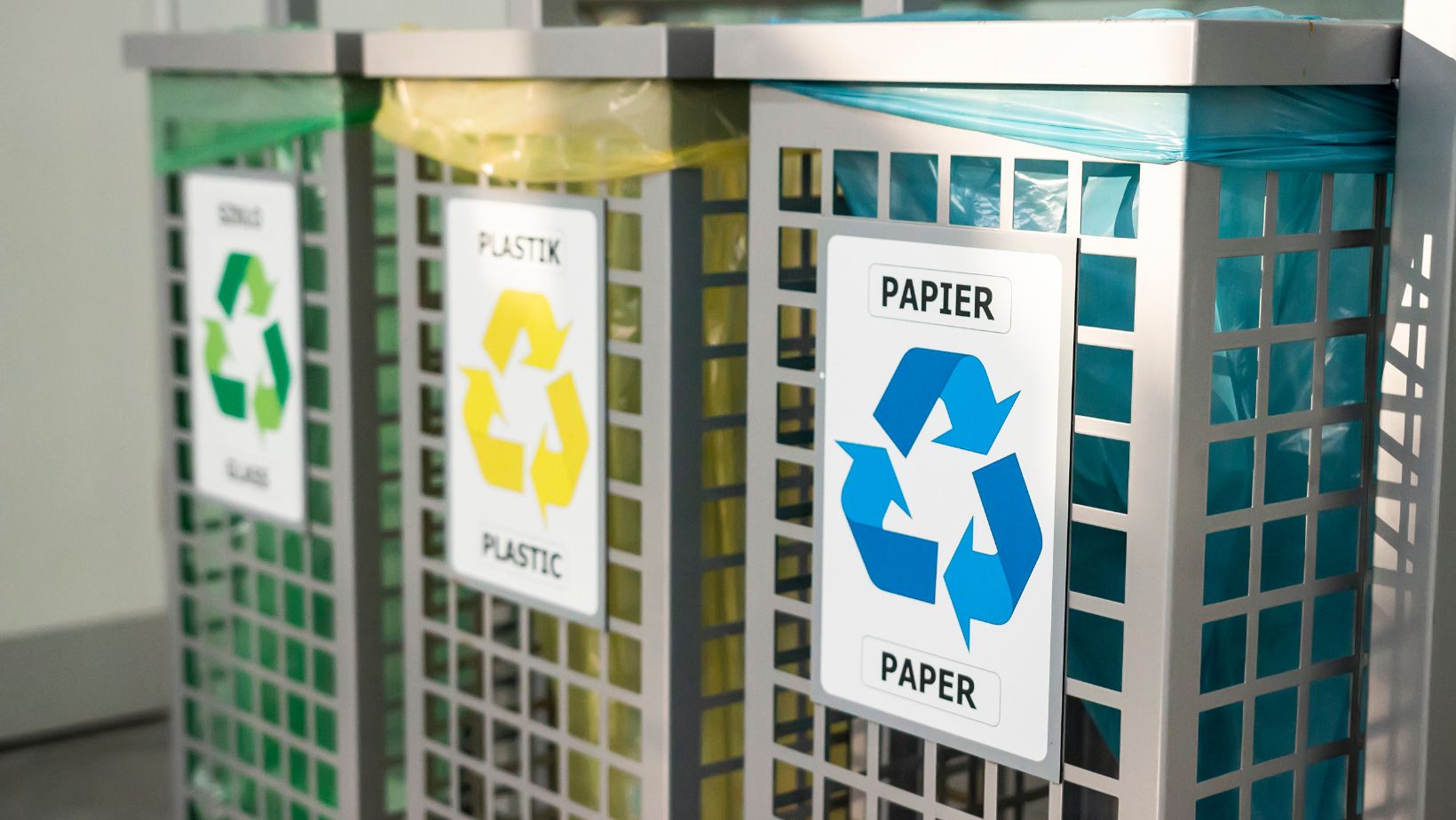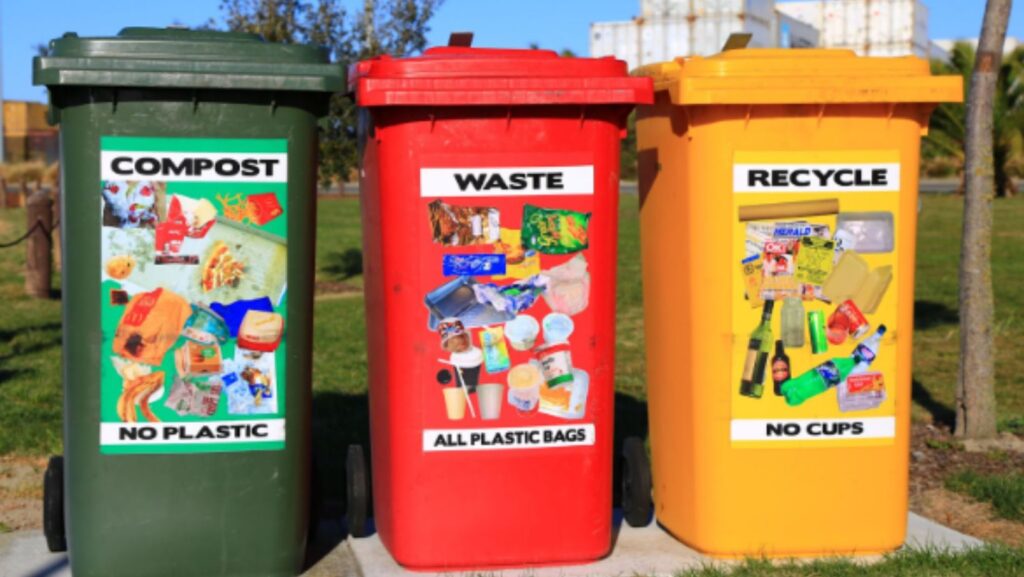In the modern era, mindful waste management in homes has become increasingly crucial for several reasons. The immense volumes of waste produced globally necessitate responsible handling and disposal to mitigate environmental impacts.
As of 2024, the world generates approximately 2.01 billion tons of municipal solid waste annually, a figure projected to rise to 3.40 billion tons by 2050.
This staggering increase is primarily driven by population growth and industrialization, highlighting the urgent need for sustainable waste management practices in our daily lives.
Contents
Table of Contents
ToggleMindful Waste Management
Mindful waste management involves being conscious of the waste we generate and actively seeking ways to minimize and manage it sustainably.
This concept goes beyond mere disposal; it encompasses waste reduction, proper segregation, recycling, and adopting habits that contribute to a healthier environment.
Understanding Home Waste
Types of Waste in Homes
Home waste typically includes a variety of materials ranging from organic waste like food scraps to recyclables such as paper, plastic, and glass. The composition of waste differs significantly across regions and income levels.
High-income countries, for instance, generate a higher proportion of recyclable dry waste (like paper, plastic, and metal), while lower-income countries have a larger fraction of organic waste.
Home Waste Statistics
The daily per capita waste generation in high-income countries is high, contributing significantly to global waste volumes. For example, in North America, the average person generates about 4.4 pounds of waste per day. Such statistics underscore the importance of mindful waste management practices in homes to curb this growing trend.
Sustainable Waste Management Practices
Sustainable waste management in the home is not just a necessity but also a practical approach to contributing positively to the environment. By adopting simple yet effective practices, households can significantly reduce their environmental footprint.
Segregation of Waste
Biodegradable: This category includes organic waste like food scraps, garden waste, and paper. These materials can be naturally broken down and are crucial for composting.
- Non-Biodegradable: Waste that cannot be easily decomposed, such as plastics, metals, and glass, falls under this category. Proper disposal and recycling of these materials are essential.
- Recyclable: Many household items, from paper and cardboard to certain plastics and metals, can be recycled. Segregating these from other waste types is crucial for effective recycling.
Proper segregation is the first step toward efficient waste management. It ensures that recyclable and compostable materials are not dumped in landfills, reducing the environmental impact.
Composting at Home for Biodegradable Waste
Composting is a sustainable way to manage biodegradable waste. It involves the natural process of decomposing organic material into nutrient-rich soil.
This can be done using a compost bin or a dedicated area in the garden. The compost produced is an excellent natural fertilizer for plants, reducing the need for chemical fertilizers.
Tips on Reducing Waste Generation
- Reduce Packaging: Opt for products with minimal packaging and use reusable bags and containers.
- Mindful Shopping: Buy only what you need to avoid food wastage.
- Repurpose and Reuse: Before throwing something away, consider if it can be reused or repurposed.
- Avoid Single-Use Items: Opt for reusable items instead of single-use plastics.

By adopting these practices, households can significantly reduce the amount of waste they generate.
Importance and Methods of Recycling
Recycling is a critical component of sustainable waste management. It conserves resources, saves energy, and reduces greenhouse gas emissions. Effective recycling involves:
- Understanding What Can Be Recycled: Familiarize yourself with local recycling guidelines.
- Proper Preparation of Recyclables: Clean and sort recyclables according to local regulations.
- Supporting Recycling Initiatives: Participate in community recycling programs and encourage others to do the same.
Recycling not only diverts waste from landfills but also contributes to a circular economy, where materials are reused, reducing the need for new resources.
Special Focus: Handling Hazardous Household Waste
Hazardous waste in the home poses significant risks to health and the environment. Recognizing and managing these materials safely is a critical part of mindful waste management.
Identifying Hazardous Waste
Hazardous household waste includes items like:
- Batteries: Both single-use and rechargeable batteries contain harmful chemicals.
- Electronic Waste: Old electronics can contain toxic substances like lead and mercury.
- Household Cleaners: Many cleaning products contain chemicals that can be harmful if not disposed of properly.
- Paints and Solvents: These often contain volatile organic compounds and other hazardous materials.
Being aware of these items and treating them differently from regular waste is crucial for safety and environmental protection.
Safe Disposal Methods
Proper disposal of hazardous waste involves:
- Local Waste Facilities: Many communities have designated facilities for hazardous waste disposal. Check local resources for information.
- Special Collection Days: Some areas offer special collection days for hazardous materials.
- Following Manufacturer Instructions: For items like electronics, following the manufacturer’s guidance on disposal is essential.
Never dispose of hazardous waste in regular trash bins, as they pose risks to waste handlers and the environment.
Brief Section on Mold Management
Mold in homes, often a result of improper waste management, can pose health risks and structural damage and should be removed carefully.
Importance of Addressing Mold in Waste Management
Mold thrives in moist environments, often exacerbated by improper disposal of organic waste or poor ventilation. Managing waste effectively and maintaining dry, clean environments are key to preventing mold growth.
Tips on Preventing and Getting Rid of Mold
- Keep Areas Dry: Ensure areas prone to moisture, like bathrooms and kitchens, are well-ventilated.
- Regular Cleaning: Regular cleaning, especially in areas where moisture accumulates, can prevent mold spores from taking hold.
- Immediate Action: If mold is spotted, clean it immediately with appropriate cleaning agents.
- Control Humidity: Use dehumidifiers in damp areas of the home to maintain a dry environment.

Careful handling of hazardous waste and proactive mold management is integral to maintaining a healthy, sustainable home environment.
Implementing Mindful Waste Habits
Daily Routines and Habits for Sustainable Waste Management
Incorporating sustainable waste management into daily life begins with simple yet impactful changes like segregating waste as part of the daily routine. This includes having designated areas for recyclables, biodegradables, and non-biodegradables.
Mindful purchasing is also crucial, where you choose products with minimal packaging, opt for bulk buying, and favor items that are recyclable or reusable.
Setting up a home composting system can effectively handle organic waste, reduce landfill contributions, and provide excellent natural fertilizer for gardens.
Additionally, being conscious of energy and water usage is an integral part of a sustainable lifestyle, as conservation in these areas significantly contributes to overall environmental health.
Engaging Family and Community in Sustainable Practices
Creating a sustainable home environment extends to educating and engaging families and the wider community in these practices. For children, learning about recycling and composting can be made enjoyable through educational activities.
Community involvement can take the form of participating in or organizing local clean-up drives, recycling initiatives, and environmental workshops.
Sharing knowledge and resources with neighbors about efficient waste management, like composting techniques or local recycling centers, fosters a collaborative approach to sustainability.
By leading through example and actively practicing sustainable habits at home, you can inspire others in your community to adopt similar practices.

